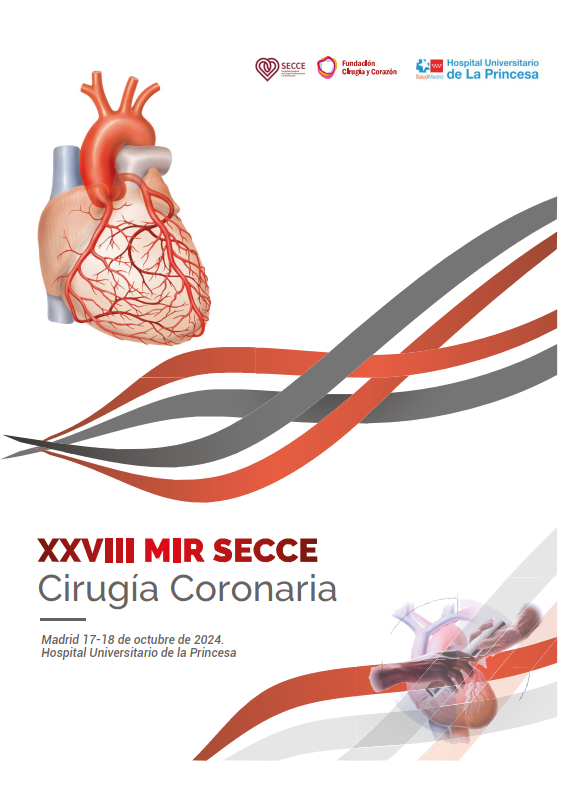Tricuspid regurgitation (TR) is a prevalent valvular condition associated with substantial morbidity and mortality. TR commonly coexists with heart failure (HF), regardless of left ventricular ejection fraction (LVEF). In individuals with preserved LVEF, significant TR often reflects an advanced disease phenotype, characterized by atrial fibrillation and maladaptive right ventricular remodeling.
A history of prior heart failure hospitalizations (HFH) is a well-recognized independent predictor of adverse outcomes, both in HF populations and in patients treated for left-sided valve disease. Transcatheter tricuspid edge-to-edge repair (T-TEER) has emerged as a minimally invasive alternative for tricuspid valve intervention; however, the influence of HFH burden on clinical outcomes in this setting remains poorly understood. This registry sought to assess the clinical impact of recent HFH on prognosis following T-TEER.
The TRI-SPA registry is a retrospective, multicenter study designed to evaluate the impact of HFH on mortality and heart failure readmissions in patients with symptomatic TR (at least severe) despite optimized medical therapy and deemed unsuitable for surgery, who underwent T-TEER. Data collection included demographic and clinical variables, pharmacologic therapy, and number of HFH within the 12 months preceding the intervention.
TR severity was assessed by transthoracic echocardiography and categorized into 5 grades (mild, moderate, severe, massive, torrential). Etiology was classified as primary, secondary, or device-induced due to intracardiac leads. Procedural success was defined as achieving a post-procedural TR grade ≤2+ (moderate).
Patients were stratified into 3 groups: no HFH, 1 HFH, and >1 HFH within the year before intervention. The primary composite endpoint consisted of all-cause mortality and time to first HFH at 12 months. Secondary endpoints included each component of the primary endpoint evaluated individually.
The study included 262 patients: 167 (63.7%) had no HFH in the prior 12 months, 60 (22.9%) had 1 HFH, and 35 (13.4%) experienced >1 HFH. Median follow-up was 1 year. The median patient age was 78 years, and 71% were women. Individuals with >1 HFH exhibited a higher comorbidity burden, greater congestion, and required higher loop-diuretic doses than those without HFH. Median LVEF was 59%. Patients with multiple admissions demonstrated larger biventricular dimensions.
There were no significant differences between groups regarding baseline TR severity, number of implanted clips, residual TR at discharge, or periprocedural complications. Patients without prior HFH required fewer hospitalization days overall.
The primary endpoint occurred in 13.7% of the population at 12 months (9.9% in the no-HFH group, 16.7% in the 1-HFH group, and 43.1% in the >1-HFH group; p<.001). A lower primary endpoint rate was observed in patients with 1 HFH compared with >1 HFH (p=.01), while no significant difference was detected between those with 1 HFH and those without HFH (p=.14).
In Cox regression analysis, recurrent HFH (HR 5.37; p=.003) and reduced tricuspid annular plane systolic excursion (HR 11; p=.043) were independent predictors of the primary endpoint. There were significant differences in all-cause mortality and HF readmissions between groups (p=.036 and p<.001, respectively). Prior HFH within 12 months was independently associated with both mortality and readmissions (HR 7.24; p=.019 and HR 4.09; p=.007, respectively).
Overall HFH burden decreased notably after T-TEER: from 159 HFH events in the year prior to the procedure to 49 during the following year (p<.001). Admission rates per 100 patient-years were lowest in patients without prior HFH and highest in those with recurrent HFH (14.6, 37.8, and 57.8 per 100 patient-years, respectively).
COMMENTARY:
The TRI-SPA registry provides a valuable real-world contribution to the field of transcatheter therapy for TR, capturing clinical experience from 15 Spanish centers across a broad spectrum of symptomatic patients. One of the most relevant findings is that individuals with recurrent HFH within the year preceding T-TEER display a markedly worse prognosis compared with patients experiencing a single or no hospitalization. The authors suggest that recurrent HFH may indicate a more advanced stage of disease, supporting the hypothesis that earlier intervention could improve outcomes.
Clearer guidance on patient selection and timing of intervention is needed to optimize clinical benefit while preventing unnecessary procedural risks in frailer populations unlikely to achieve meaningful improvement.
Several limitations deserve recognition, including the absence of a control group due to the observational nature of the study and the lack of centralized echocardiographic assessment, which could introduce grading inconsistency in TR severity. A particularly important concern is the choice of all-cause mortality as part of the primary composite endpoint, reducing specificity by failing to distinguish cardiovascular from non-cardiovascular causes of death. This issue is especially relevant in populations with substantial comorbidity burden such as the one represented here.
In conclusion, the TRI-SPA registry enhances our understanding of the impact of T-TEER in TR patients with different HFH profiles. Nevertheless, the inherent limitations of the observational design and the use of all-cause mortality as part of the primary endpoint temper the strength of the conclusions. Future research should aim to refine patient selection, clarify the optimal timing of intervention, and provide a deeper understanding of how percutaneous therapies influence the clinical trajectory of this complex patient cohort.
REFERENCE:
Echarte-Morales J, Sanchis L, Arzamendi D, Moñivas V, Carrasco-Chinchilla F, Pan M, Nombela-Franco L, et al. Edge-to-edge tricuspid valve repair and heart failure hospitalizations: the TRI-SPA registry. Rev Esp Cardiol (Engl Ed). 2025 Sep;78(9):800-810. English, Spanish. doi: 10.1016/j.rec.2025.02.015. Epub 2025 Mar 26. PMID: 40154922.



